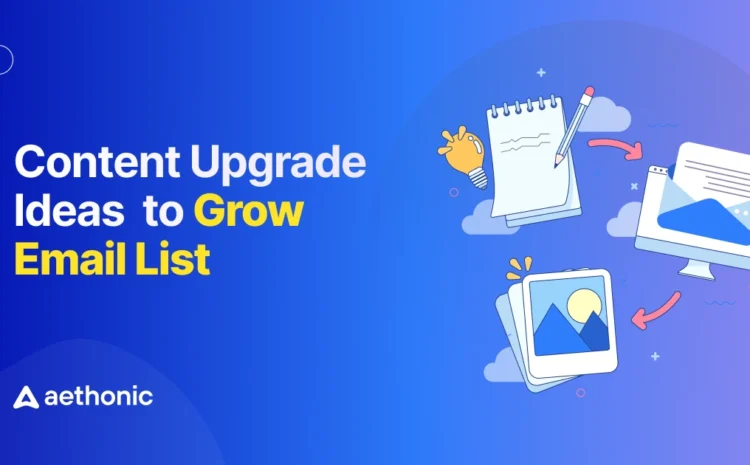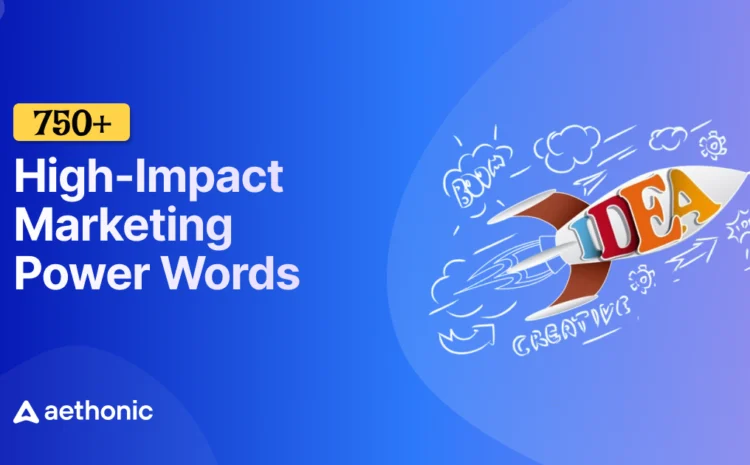30 Newsletter Ideas to Keep Subscribers Clicking, Reading & Buying
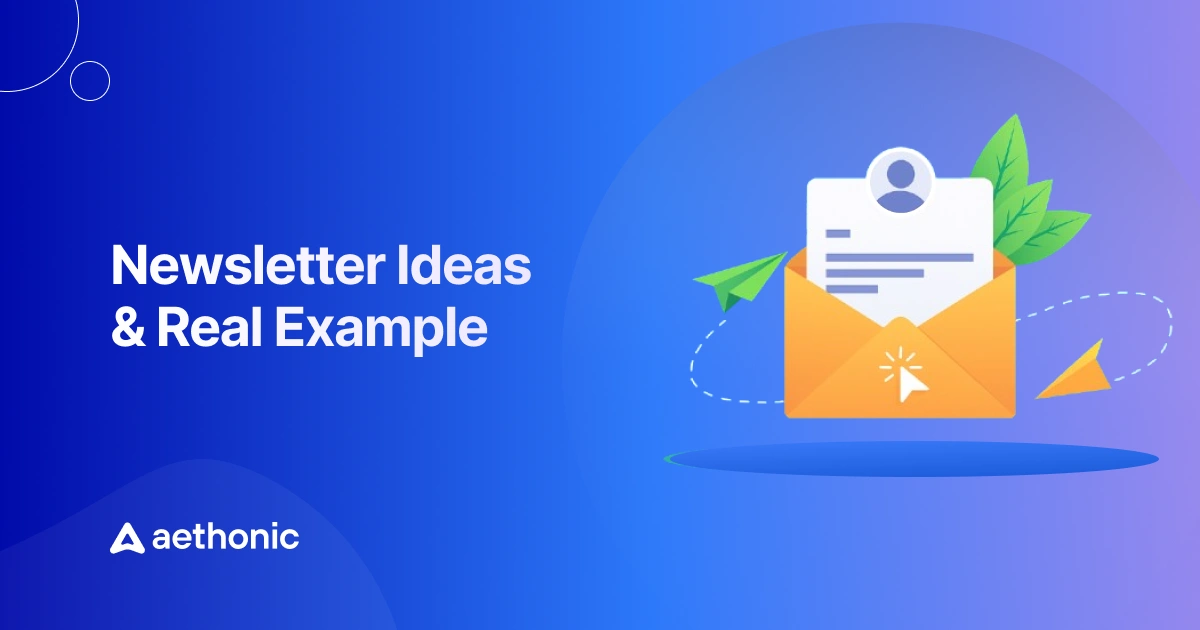
Email newsletters are still one of the best ways for marketers to connect with people generate real user data and increase sales 10x faster than before.
In fact, email marketing works 30 times better than social media for getting new customers. The secret is to send content that people want to open and read.
As an email marketing specialist, I will share 30 tried-and-true newsletter ideas that will keep your subscribers interested and ready to click, and also help turn them into loyal customers.
These ideas are simple to use and will help you regularly send newsletters that your audience enjoys and that help your business grow.
Keep reading…
Table of Contents
Why are newsletters important?
Email newsletters do more than promote. It builds a relationship with your customer.
Unlike social posts that disappear in minutes, an email stays in the inbox until it’s read or deleted. Done well, it feels personal and valuable.
A study by Nielsen Norman Group noted that ‘newsletters feel personal because they arrive in users’ inboxes, and users have an ongoing relationship with them,’ ultimately making newsletters more effective for conversion than website visits.
Email also delivers strong results: for every $1 spent, the average return is about 30x or more. That’s because subscribers are people who choose to hear from you. If you send them content they actually enjoy, they’ll keep opening, clicking, and eventually buying.
30 Newsletter ideas your subscribers will actually click to read
Ready to supercharge your email content?
Below are 40 newsletter ideas, each designed to deliver value and spark engagement. Mix and match these ideas to keep your campaigns fresh.
Remember, the goal is to offer something useful or interesting in every email so that your subscribers genuinely look forward to your newsletters.
1. Share weekly industry news – Delivers value and keeps readers informed
Subscribers like staying updated without digging through dozens of sources. A short weekly roundup of industry news makes your brand a go-to resource. Keep it simple—3 to 5 key updates with a quick summary.
This saves readers time and shows that you’re on top of the trends. Over time, they’ll trust your newsletter as their regular news stop.
2. Announce product launches and updates – High-interest content that creates buzz
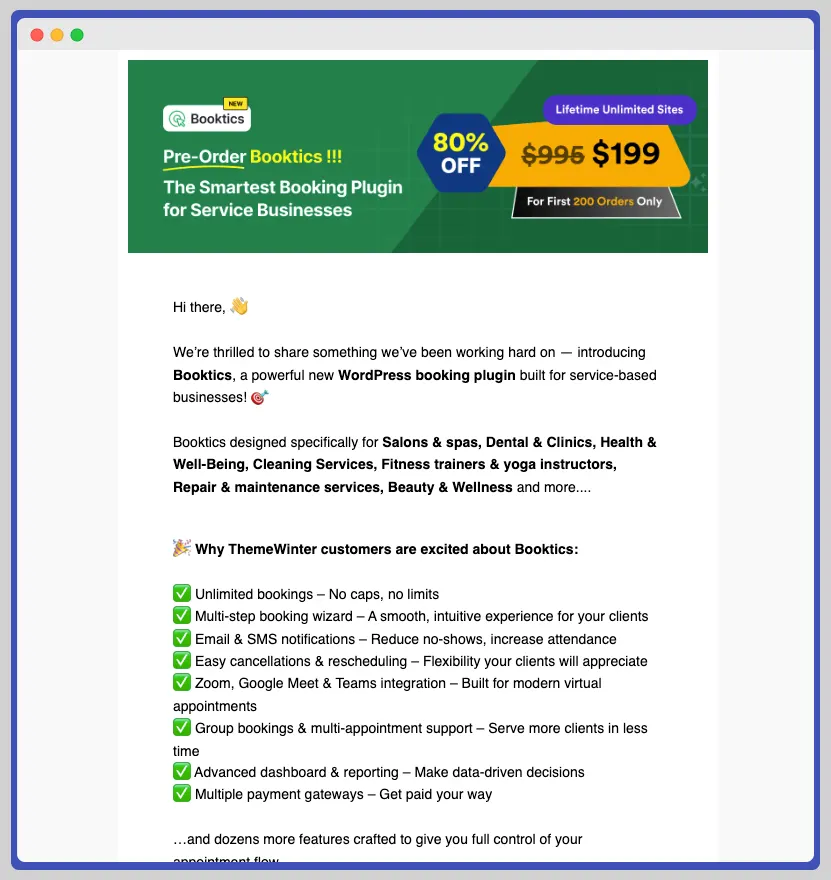
Whenever you have a new product, feature, or update, your newsletter is the perfect place to announce it.
Subscribers who have opted into your list are likely interested in your offerings, so keep them in the loop about new releases – they’ll appreciate being the first to know.
Subscribers like being the first to know about something new.
Use your newsletter to share product launches, features, or updates. Highlight what’s new, why it matters, and how they can try it. Add a strong subject line like “Just Launched: [Product Name]” to build excitement and drive clicks.
📚 Related reading: 750+ High-Impact Marketing Power Words to Grab Attention Instantly: For Social Media, Online Sales, Email, and Website 👉 Read more
3. Add infographics for easy reading – Makes content visual and engaging
Many readers prefer visuals over long text. Adding an infographic makes your newsletter easier to scan and more engaging.
You can use charts, step-by-step graphics, or simple illustrations to explain ideas quickly. Tools like Canva make it easy to design without needing a pro. A clean, colorful infographic can keep readers interested and scrolling.
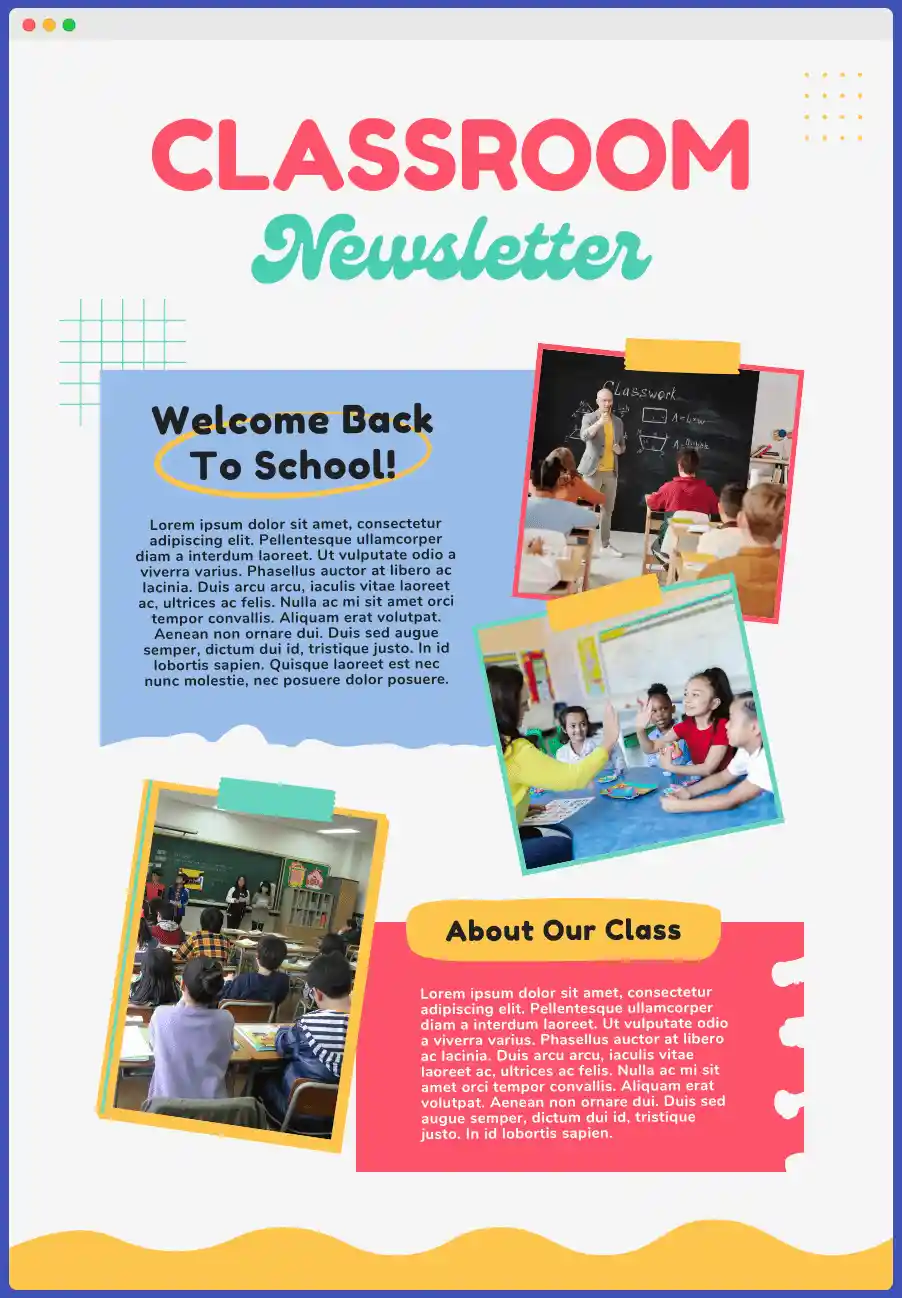
4. Feature customer reviews and social proof – Builds trust and encourages clicks
Reviews build trust better than claims. Share quotes, ratings, or photos from real customers in your emails. A short testimonial or screenshot shows that others had a good experience with you.
This reassures new readers and nudges them to act. Including social media posts or user photos makes it even more authentic.
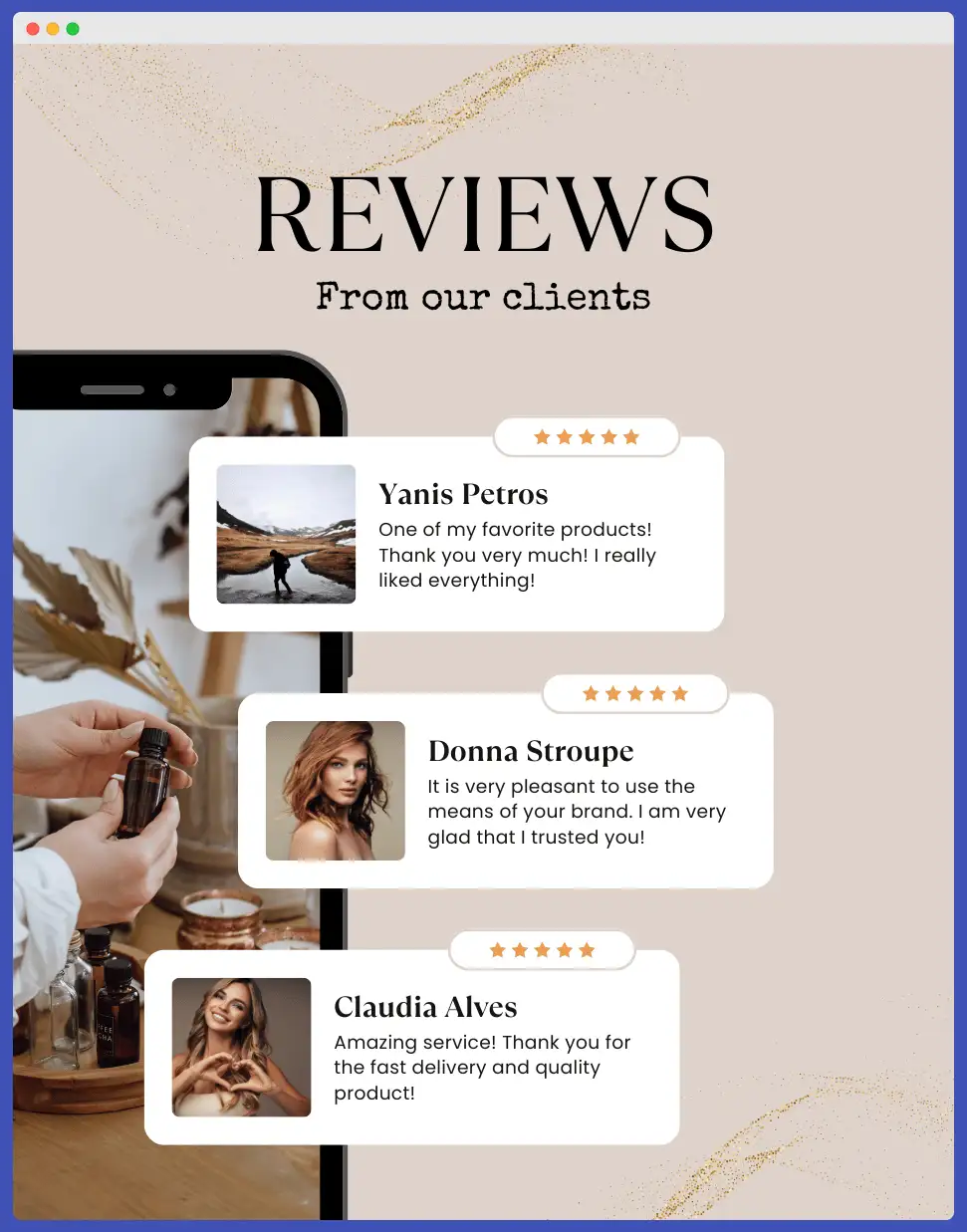
5. Invite feedback with polls or surveys – Engages readers and gathers insights
Make your newsletter interactive by asking subscribers for their opinions. Instead of just sending info, ask subscribers for their opinions. A quick poll or survey makes the email interactive and fun.
You could let readers vote on a new product feature, flavor, or design. Offering a small reward for responses boosts participation. Sharing results later shows you listen and value their input.
6. Tell Behind-the-scenes stories -Connects on a personal, human level
Show the people and effort behind your brand. Share photos of your team at work, a short story of how you make a product, or even a day-in-the-life clip. These glimpses make your company feel human and relatable.
Readers often support brands they feel personally connected to, so small authentic moments go a long way.
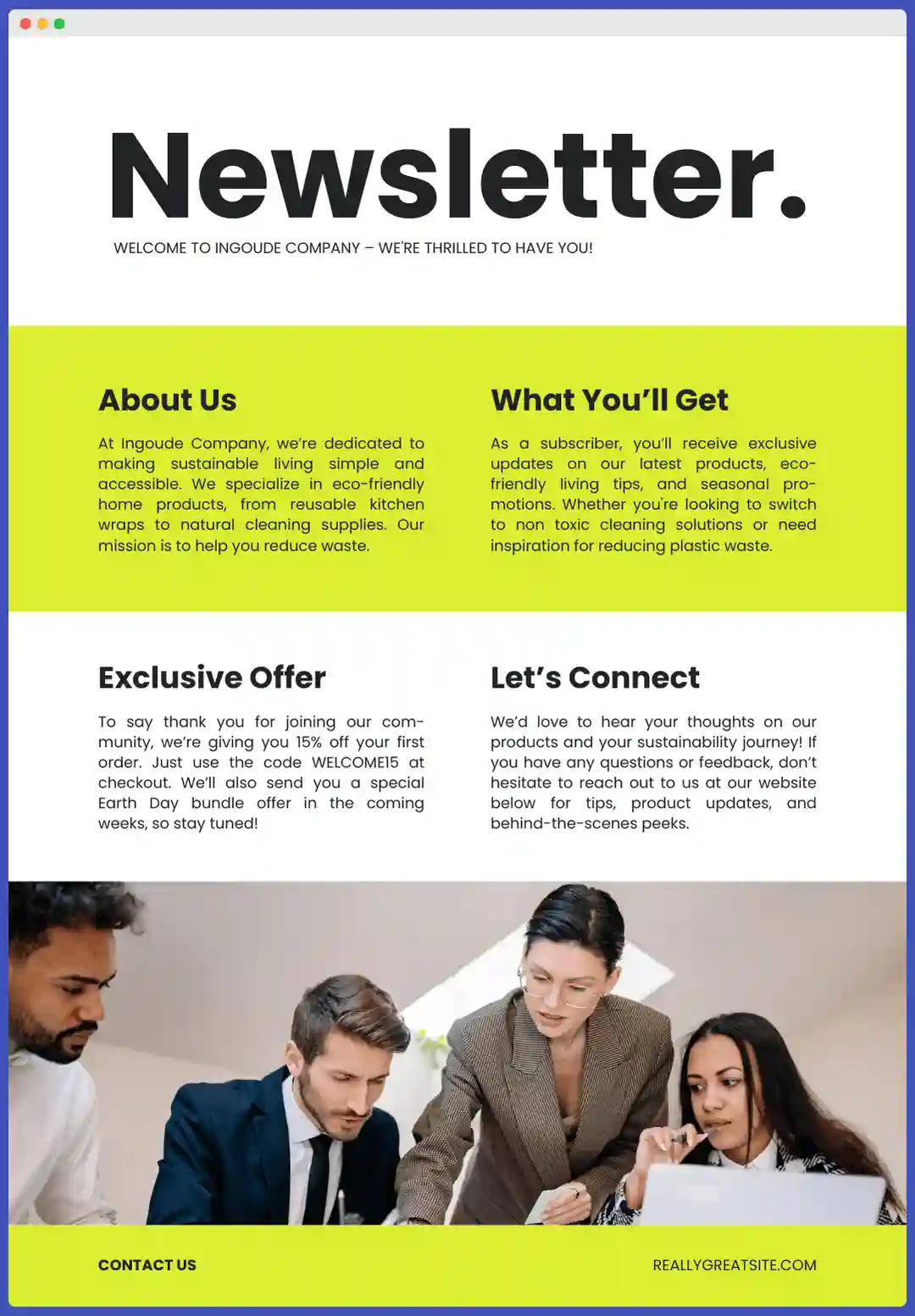
7. Highlight customer success stories -Shows real results and inspires action
Nothing inspires potential customers more than seeing how others like them achieved success using your product or service.
Show real results by featuring a short customer story. Keep it simple: what challenge did they face, and how did your product or service help? These stories inspire readers and give proof that you deliver on promises.
When subscribers see that success is possible, they’re more likely to take action.
8. Send How-to guides and blog posts – Shows your product or service in action
Educational content is always popular. Practical guides are some of the most clicked newsletter content. Share a short tutorial or link to a detailed blog post that solves a problem. Keep the explanation clear and show the benefit upfront.
For example, “3 steps to improve your website speed” is more engaging than vague advice.
Actionable content builds trust and encourages readers to return.
9. Offer time-sensitive deals or coupons – Drives urgency and encourages purchases
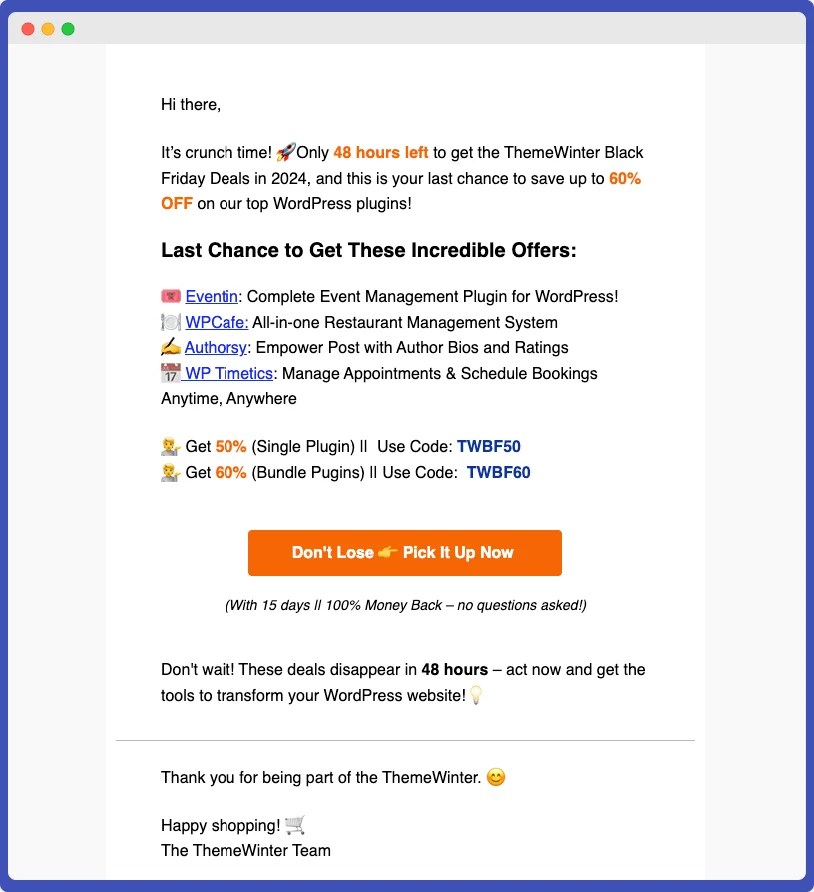
Every subscriber loves a good deal. Including an exclusive coupon code, limited-time discount, or flash sale in your newsletter is a proven way to boost click-through and sales.
For instance, you can announce a “48-hour sale” or provide a unique 20% off code just for email readers. This delights your subscribers (“everyone loves a good deal” after all) and gives them a reason to act fast.
Urgency is a powerful motivator; it plays on the fear of missing out (FOMO).
Just be sure to genuinely limit the time or quantity of the offer to maintain trust. By sending occasional time-sensitive promotions, you can spike your conversions and also train subscribers that your emails sometimes contain immediate-value offers they shouldn’t ignore.
10. Send founder or team letters – Brings authenticity and builds relationships
A personal letter from your founder, CEO, or team member can make a newsletter feel especially warm and authentic.
This isn’t about selling; it’s about communicating company values, vision, or gratitude in a human way.
Share lessons learned, company updates, or even a simple thank-you. These messages remind readers there are real people behind the brand. Done quarterly or during big changes, they strengthen trust and loyalty.
11. Share seasonal or holiday content – Aligns with readers’ plans and moods
Subscribers’ interests and buying habits often change with the calendar – think of gift guides in December, productivity tips in January, or summer-themed content in June.
Aligning your newsletter with what’s on their mind makes it instantly relatable.
For example, a travel agency might share “Top 5 Summer Vacation Deals” before summer, or a software company could send a “Cherry Blossom Special Deal” in mid of the year.
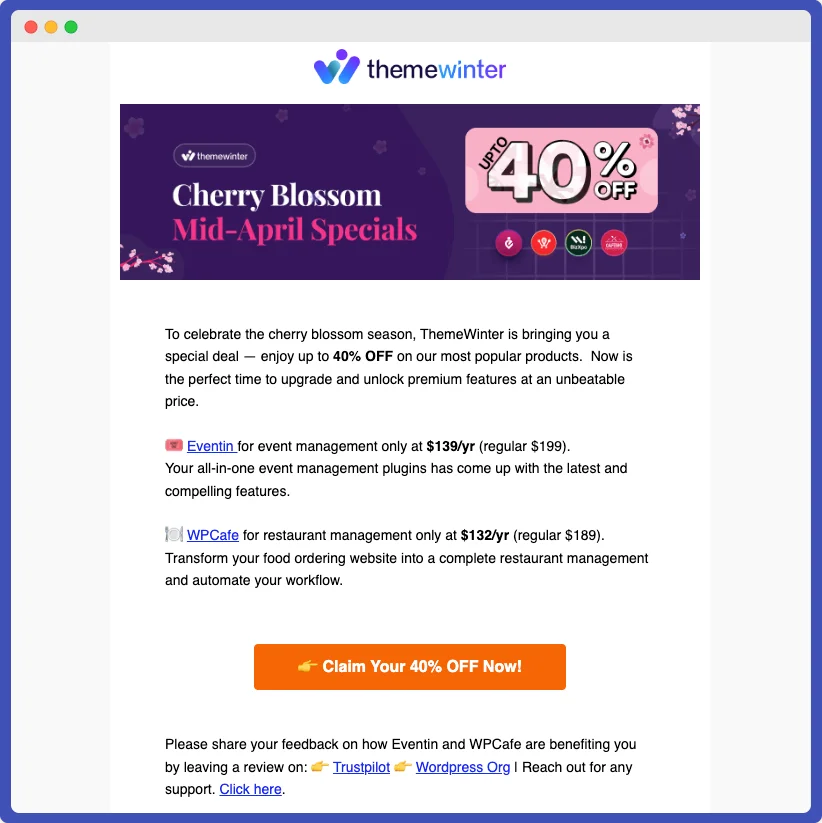
From a marketing standpoint, seasonal content can drive timely sales – consider Black Friday promotions, back-to-school tips, or holiday gift guides.
These emails connect with what’s already on your readers’ minds, and they usually result in timely sales too.
12. Encourage referrals with offers or perks – Rewards sharing and drives growth
Turn your subscribers into brand ambassadors by promoting a referral program in your newsletter. Word-of-mouth is incredibly powerful, and people are more likely to trust recommendations from friends. Use your emails to ask loyal subscribers to recommend your business to their family or colleagues.
To motivate referrals, offer a perk: for example, “Refer a friend and you both get 20% off” or give referrers a gift card or account credit for each new signup.
Referral deals grow your list and customer base with little cost. Plus, people trust recommendations from friends, so referred leads are often highly engaged.
13. Share hand-picked resource lists – Gives readers hand-picked articles, tools, or tips
Not all email newsletter content is very important. Save your readers’ time by sharing a hand-picked list of helpful articles, tools, or resources. Add a short note on why each one is valuable.
For example, a marketing newsletter might list “5 must-read articles on social trends.” Acting like a trusted guide builds credibility and keeps readers coming back.
Done like this, your newsletter becomes a one-stop source of valuable info, increasing the likelihood that subscribers open it willingly.
14. Send quick tips or hacks – Short, practical advice that’s easy to apply.
Quick tips work well because they are easy to read and actionable – in just a sentence or two, the reader learns something useful.
Keep your newsletter brief so readers can understand it in seconds. Readers will think of you as a go-to source for handy advice. These quick wins make your newsletter practical and shareable. Over time, readers will look forward to your simple, useful advice.
Moreover, tips and hacks tend to get shared; if a subscriber finds it valuable, they might forward the email to a colleague or friend.
📚 Related reading: eCommerce Popups Guide (2025): Types, Examples, and How to Create in WordPress 👉 Read more
15. Create a “You’re Doing It Wrong” series – Help readers correct common mistakes
A bold but effective way to grab attention is by telling readers what they might be doing incorrectly – and then showing them how to do it right.
The idea of a “You’re Doing It Wrong” series is to highlight common mistakes or misconceptions in your field and provide guidance on avoiding them.
This works because it piques curiosity (nobody likes the idea of doing something wrong!) and promises a solution.
For instance, a subject line like “Writing Emails? You Might Be Doing It Wrong…” will almost certainly get a click from a marketing manager.
Inside the newsletter, you could explain a frequent mistake (say, using too many complex words in copy) and then offer a better approach. This format positions you as a helpful expert who’s setting the reader on the right path.
16. Feature expert interviews or Q&As -Add credibility and fresh perspectives.
Bring fresh voices into your newsletter more interesting. For example, interviewing an expert—like an industry leader, influencer, or even a well-informed customer—gives your readers fresh insights. It also helps build your credibility by connecting you with experts.
For example, if you run a fitness apparel store, you might include a short interview with a personal trainer about workout tips, or a B2B software company could do a Q&A with a respected analyst about future trends.
Subscribers will find value in these expert opinions and stories.
You can present the interview as a short write-up, a few key questions and answers, or even a video link if available.
A good approach is to ask the expert questions your audience wants answered. You can even collect questions from your subscribers ahead of time, which helps boost engagement.
17. Share event or webinar invites – Drive attendance and build engagement
If your business hosts events, webinars, workshops, or any live sessions (online or offline), leverage your newsletter to boost attendance.
An email invitation to an event feels personal – almost like being “personally invited to an exciting event,” which everyone loves. Use your newsletter to announce upcoming events and encourage subscribers to RSVP or register.
For example: “Join us for a free webinar next Thursday on [Topic] – click here to save your spot!” Be sure to include the essential details (date, time, topic, how to register) and a compelling reason to attend (“learn X skill” or “exclusive sneak peek at new product”).
Promoting your events through email will give you the opportunity to get a significant turnout of people who are already engaged and following your brand.
📍Tip: keep the tone inviting and emphasize limited spots or “register now” to nudge prompt action, since timely response matters for events.
📚 Related reading: What is a Discount Popup? How to Create Discount Popup in WordPress 👉 Read more
18. Publish case studies or results – Show what’s working with real numbers
Got impressive results to share? Turn them into a mini case study in your newsletter.
Show social proof that your products/solution works. Share short case studies with the problem, solution, and results. Use numbers when possible, like “Boosted sales by 40% in 3 months.”
According to marketing research, when subscribers read about a success story with concrete outcomes from a happy customer, “it encourages them to become a customer too,” by serving as persuasive social proof.
Real results are more convincing than claims. Case studies give readers the confidence to trust and try your product.
19. Share your milestones or achievements – Build pride and strengthen brand connection
Celebrate wins with your subscribers. Whether your company just reached 10,000 customers, celebrated a 5th anniversary, launched a new product, or won an industry award, don’t be shy—share these milestones in your newsletter and invite your subscribers to celebrate with you!
When you share big achievements, it’s great to show your joy and positivity. Your subscribers care about your brand, and sharing your success helps you build a stronger connection with them.
20. Offer early access or VIP content – Reward loyal subscribers with exclusives
Everyone loves feeling like a VIP.
Reward loyal readers with special offers. Give them early access to sales, sneak peeks of products, or exclusive content. Make it clear this benefit is only for subscribers. Exclusivity makes readers feel valued and keeps them subscribed. A “first look” email often drives strong engagement and sales.
It is important to make your exclusive offer as valuable to your audience as possible; if it is the same offer you send out to everyone, your newsletter will not be valued.
📚 Related reading: 25+ Proven Lead Generation Headlines and Form Creation Guide (Tutorial) 👉 Read more
22. Create Step-by-step tutorials – Make learning simple and actionable
Tutorials make complex tasks simple. Share a short “How-to” with clear steps that readers can follow right away. For example, “Set up your account in 3 easy steps.” Adding images or GIFs makes it even clearer. Tutorials prove you care about customer success and reduce confusion about your product.
When subscribers successfully apply your tips and see improvement, they’ll trust your brand even more (and likely stick around for more lessons in future emails).
23. Share seasonal shopping guides – Help subscribers plan purchases in time
Consumers often seek guidance on what to buy during key seasons or occasions – so why not become their trusted advisor?
Think “Holiday Gift Guide,” “Back-to-School Essentials,” “Summer Must-Haves,” etc. By sending this in your newsletter, you provide value by simplifying their decision process.
These guides work wonders: for e-commerce, gift guides generate more sales around the holidays and help customers shop more easily. They essentially bundle your products or affiliate picks in a convenient way at the right time.
Additionally, don’t limit yourself to major holidays – you can create guides for any season or event (wedding season, Mother’s Day, even quirky observances).
24. Recommend tools or resources you use – Practical insights readers appreciate
One way to provide extra value (and personality) in your newsletter is to share recommendations for tools, apps, or resources that you personally find useful.
This is slightly different from a general curated list (#13) in that it’s framed as your recommendations – giving a peek into your toolbox.
For example, you might say, “I’ve been using XYZ tool for the past month, and it’s fantastic for [benefit]. If you’re looking to improve [area], give it a try!”
These suggestions resonate because they come off as genuine tips from a friend, rather than marketing.
Subscribers love learning about new resources that could help them, especially if it’s something you’ve vetted.
Overall, by sharing what resources help you, you help your subscribers achieve more – and that positive association reflects back on your brand.
📚 Related reading: What is Flash Sale Popup? How to Create Flash Sale Popup in WordPress 👉 Read more
25. Run giveaways or contests – Build excitement and increase clicks
Inject some excitement into your newsletters by occasionally hosting a giveaway or contest. This is a tried-and-true method to spike engagement because it offers a chance to win something, and who can resist that?
For instance, you could announce a contest like, “We’re giving away a free 1-year subscription! Enter by clicking here and telling us your favorite feature.” Or a simpler approach: “Reply to this email with your answer to our question for a chance to win a $50 gift card.”
Giveaways naturally encourage readers to take action (click, reply, share) because there’s a potential reward. They also add a fun element to your content mix.
26. Share “Best Of” lists – Collect your top blogs, products, or tips
Everyone loves top lists. Create “Best of the Year” or “Top 5 Blogs” style newsletters. Add short descriptions and links to each item.
Lists are quick to scan and give readers the highlights without digging. They’re also a smart way to re-promote your strongest content.
📚 Related reading: How to Add Multi-step Popup Forms in WordPress 👉 Read more
27. Add surveys for product feedback – Let subscribers shape your next steps
Ask subscribers what they think about your product or service. A short survey link or one-click poll works best. For example, you might include a section: “What feature should we build next?” This makes readers feel involved and gives you valuable insights. Closing the loop by sharing results shows you care.
People who might not click on a normal promo might click to voice their opinion – it’s a different kind of interaction. And the benefit to you is obvious: you collect data and ideas that can guide your product decisions.
It’s a win-win: subscribers engage by giving feedback, and you gain insights to serve them better.
28. Share upcoming roadmaps or sneak peeks – Build anticipation for what’s next
If you want to get your subscribers excited about the future, give them a glimpse of what’s coming down the pipeline. Sharing a product roadmap or sneak peeks of upcoming features, products, or improvements can generate buzz and a sense of exclusivity.
For example, a software company’s newsletter might include: “Sneak Peek: Coming Next Month – A new dashboard design with advanced analytics (see screenshot below!).” Or a cosmetics brand could tease, “We’re working on a new summer skincare line – here’s a behind-the-scenes look at one of the ingredients we’re testing.”
This kind of content makes subscribers feel like insiders. They enjoy being “in the know,” and it can pique their curiosity.
As a marketing best practice, highlighting upcoming launches with key features and providing sneak peeks or behind-the-scenes glimpses is a great way to build buzz.
📚 Related reading: How to Write Effective Meeting Reminder Emails (With Templates & Examples) 👉 Read more
29. Highlight limited-edition products – Create urgency to act fast
If you offer something that won’t be around forever – a limited-edition product, a special batch, or a one-time collaboration – your newsletter should shout it from the rooftops.
To create urgency, use phrases like “Only 5 Made” or “Never to be Restocked.” If possible, add a live count or countdown, like “Only 20 left!”
Besides driving immediate sales, highlighting limited editions in your newsletter also adds excitement and freshness to your content.
Limited-edition items naturally feel scarce and exclusive, which encourages subscribers to act fast and buy before they miss out.
For example, say: “Available Now: Limited-Edition Fall Harvest Coffee Blend – Only 500 bags!” Show a good photo, describe what makes it special, and let people know that once it’s gone, it’s gone.
30. Send a thank-you or appreciation note – Simple gestures build loyalty and warmth
Sometimes a simple thank-you goes a long way. Sending an occasional thank-you email to your subscribers (or customers) can leave a lasting positive impression.
A genuine thank-you email tends to have very high open and engagement rates; in fact, thank-you emails can have an average open rate of around 67%, far higher than regular marketing emails.
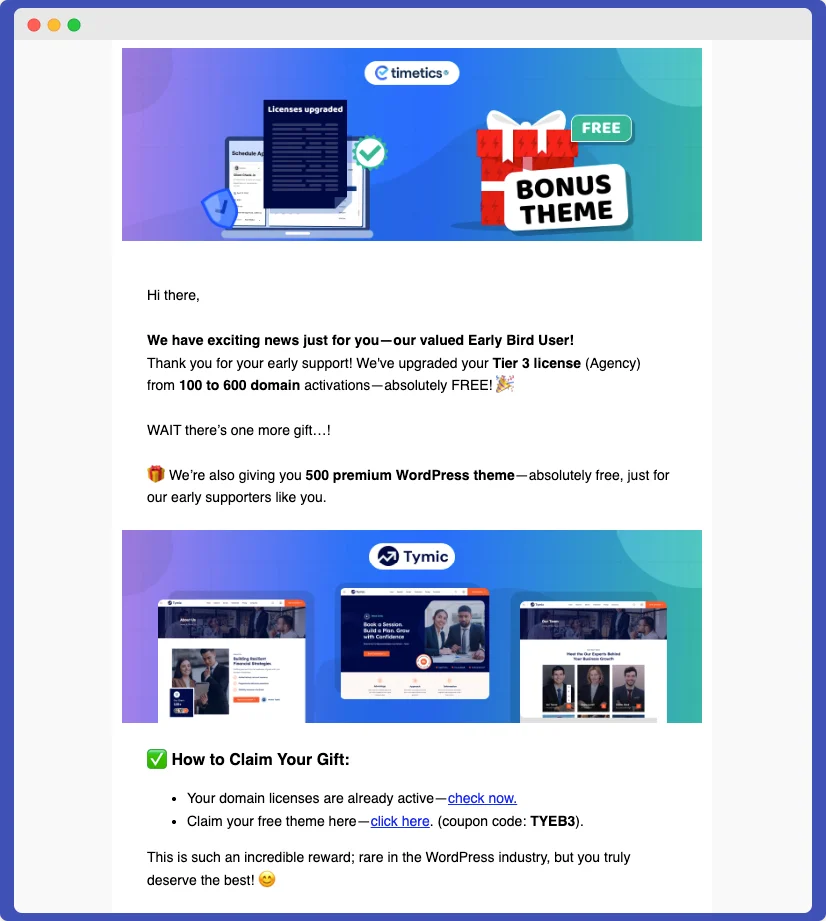
People enjoy being appreciated. And when you attach a small token of appreciation – like a special discount, a freebie, or even just heartfelt words – it can boost loyalty significantly.
For example, “Thank you for being a subscriber – here’s 20% off your next purchase as a small token of our gratitude. Also, thank-you notes can be a nice way to re-engage an inactive list segment.
How to build a real and valid email marketing list ? (and convert subscribers into customers)
Building a real and valid email list means focusing on quality, not just numbers. You want subscribers who are genuinely interested in your brand, because they’re the ones most likely to open, click, and buy.
One of the easiest ways to capture these engaged users is with pop-ups marketing.
Tools like Poptics popup builder make this simple—it’s a free option that helps you create attractive popups, collect real user emails, and even guide new subscribers toward the right offers. With the right setup, every signup you get is a potential customer, not just another name on your list.
Wrapping Up
Newsletters work best when they deliver value, not just promotions.
With these 30 ideas, you can keep your emails fresh, engaging, and worth opening. Start small, test what your audience responds to, and build from there. And don’t forget—growing a real email list with tools like Poptics popup builder will make sure your ideas reach the right people.
The more useful and personal your emails feel, the more clicks, reads, and sales you’ll see.
FAQs
1. What should I write in an email newsletter?
Share content your audience finds useful—like tips, guides, customer stories, updates, or exclusive offers. The key is to mix value with promotion.
2. How often should I send email newsletters?
Once a week or twice a month works well for most small businesses. Stay consistent, but don’t overwhelm your subscribers.
3. How do I make my newsletters more engaging?
Use short subject lines, clear design, and interactive elements like polls or quizzes. Personal touches like stories or thank-you notes also increase engagement.
4. What’s the best way to grow my email list?
Use signup forms and popups on your website. Tools like Poptics popup builder help collect real user emails and guide them toward the right content.
5. Do email newsletters really help increase sales?
Yes. A good newsletter keeps your brand top-of-mind, builds trust, and nudges readers toward making a purchase. With consistent value, subscribers often turn into loyal customers.
